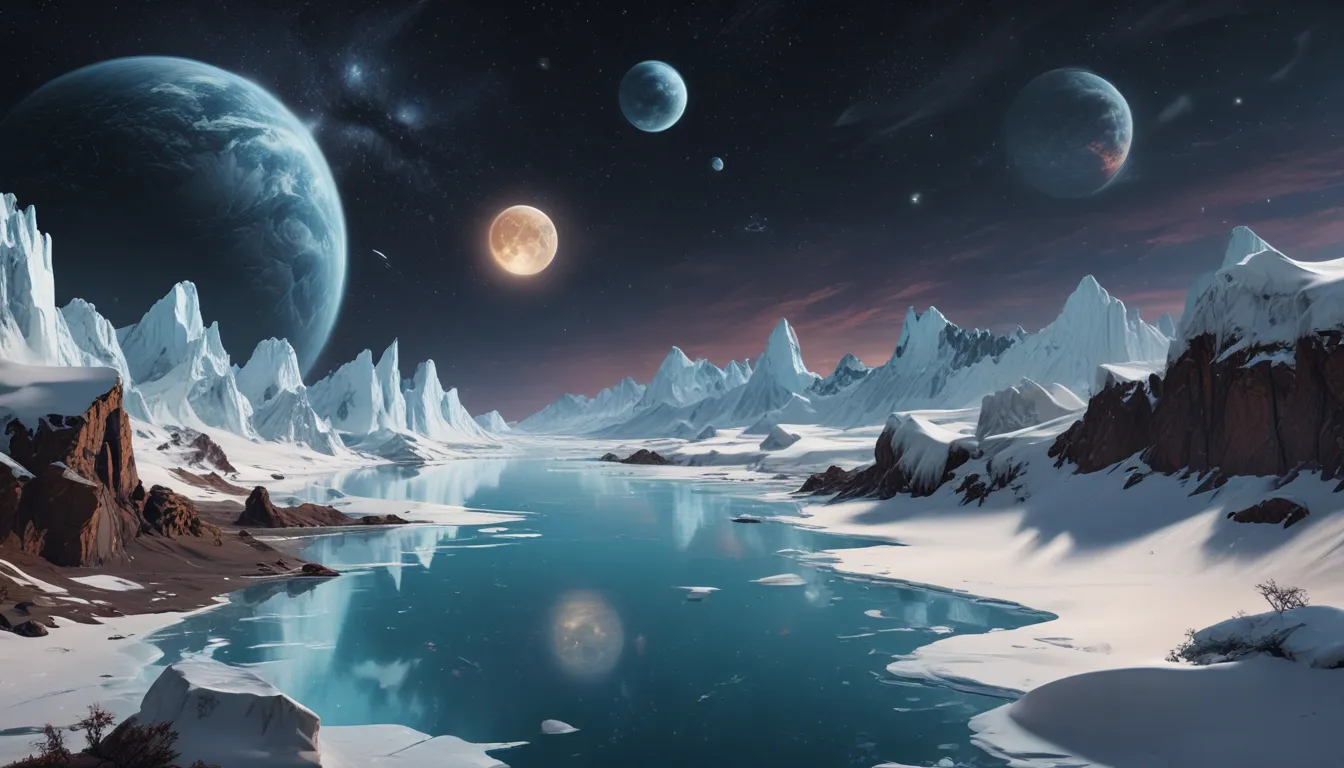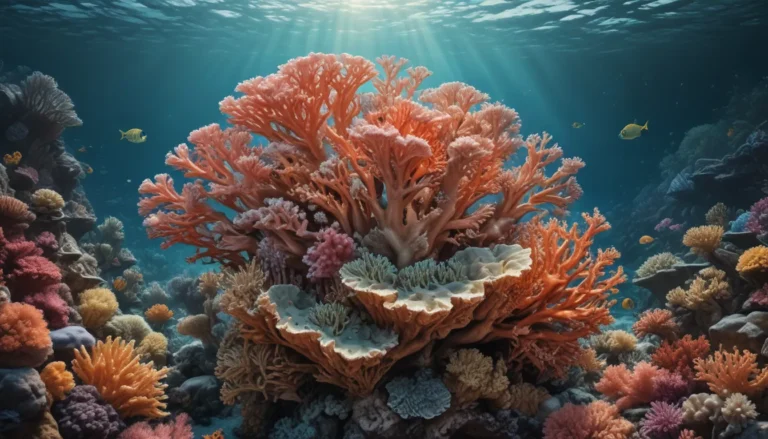The pictures we use in our articles might not show exactly what the words say. We choose these pictures to make you interested in reading more. The pictures work together with the words but don’t take their place. The words still tell you the important facts.
Water, a fundamental element for life on Earth, also plays a crucial role in the vast expanse of space. As our understanding of the universe expands, so does our knowledge of the significance of ice and water on celestial bodies. From hidden oceans on moons to icy landscapes on distant planets, planetary ice and water have captured the imagination of scientists and space enthusiasts alike.
Key Takeaways
- Planetary ice and water are essential in understanding the potential for life beyond Earth.
- The study of planetary ice offers insights into our solar system's formation, climate science, and the origins of the universe.
The Significance of Planetary Ice and Water for Life
Water is a vital ingredient for life as we know it, sparking scientific curiosity about the presence of ice and water across the universe.
Liquid Water on Mars
Scientists have discovered evidence suggesting the existence of liquid water beneath Mars's surface, raising questions about the potential for microbial life.
Enceladus: A Moon with a Subsurface Ocean
Saturn's moon Enceladus is believed to have a global subsurface ocean, igniting curiosity about the search for extraterrestrial life in our solar system.
Europa’s Icy Jets
Jupiter's moon Europa exhibits powerful water vapor plumes, hinting at the possibility of a subsurface ocean, sparking interest in potential habitats for life.
The Enigmatic Planetary Ices
Various forms of ice, including crystalline, amorphous, and exotic types, offer insights into the mysteries of planetary composition.
Water Vapor on Exoplanets
Astronomers have detected water vapor in the atmospheres of exoplanets, suggesting habitable environments beyond our solar system.
Diversity of Planetary Ice Formations
From Titan's frozen lakes to Mars's ice caps, the universe showcases a diverse array of icy landscapes.
Ice Volcanoes: A Geological Marvel
Cryo-volcanoes, or ice volcanoes, found on icy bodies erupt with water, ice, and volatile compounds, shedding light on geological processes.
Ice Analogs in Astrobiology
Scientists use ice analogs to study the properties of planetary ice, providing insights into the habitability of icy worlds.
Moon Exploration and Water
Recent missions have discovered water ice in shadowed regions near the Moon's poles, opening possibilities for human exploration and colonization.
Ice’s Role in Planetary Evolution
Ice shapes planetary landscapes, influencing geological processes like erosion and the formation of surface features.
Exotic Ice Beyond Water
Exotic ice volatiles like methane ice on Neptune's moon Triton expand our knowledge of planetary compositions.
Jupiter’s Icy Moons
Europa, Ganymede, and Callisto, Jupiter's icy moons, offer unique characteristics and potential for harboring water beneath their icy surfaces.
Ice’s Impact on Climate Science
Ice sheets and polar ice caps regulate planetary climates by reflecting sunlight and influencing temperature patterns.
Planetary Ice and the Universe’s Origins
Studying planetary ice provides insights into solar system formation, planetary evolution, and the potential for life beyond Earth.
In conclusion, the exploration of planetary ice and water opens new horizons in our understanding of the cosmos. The diverse landscapes and hidden oceans on celestial bodies offer tantalizing prospects for discovering extraterrestrial life and unraveling the mysteries of planetary evolution. As we gaze at the stars, let us remember that the dance of ice and water in the universe continues to inspire wonder and curiosity.
FAQs
Q: Is there ice on other planets besides Earth?
A: Yes, ice has been discovered on several celestial bodies within our solar system, including moons like Europa, Enceladus, and Ganymede.
Q: Can water exist in a liquid form on other planets?
A: The conditions for liquid water vary, but evidence suggests its presence beneath the surface of certain moons and on Mars.
Q: How does water ice form on planets?
A: Water ice forms through processes like condensation and freezing in cold environments with sufficient moisture.
Q: Does ice or water indicate the possibility of life?
A: While crucial, the presence of ice or water is not the sole factor in determining the potential for life beyond Earth.
Q: Are there missions planned to study planetary ice and water?
A: Yes, space agencies have planned missions like Europa Clipper and Mars Sample Return to explore planetary ice and water.
Uncover the wonders of our planet's frozen landscapes and water's cyclical journey. From the grandeur of polar ice caps to the intricate dance of the water cycle, the beauty and power of ice and water never cease to amaze. Explore further into the chilling world of ice caps, where colossal masses of frozen water shape Earth's climate and ecosystems. Immerse yourself in the awe-inspiring water cycle, sustaining life on our planet in a harmonious balance.
Was this page helpful?
Our dedication to providing reliable and engaging content drives us to ensure each fact is contributed by real users, bringing a wealth of insights and information. Trust in our commitment to quality and authenticity as you delve into the wonders of icy worlds and the mysteries of planetary ice and water.






